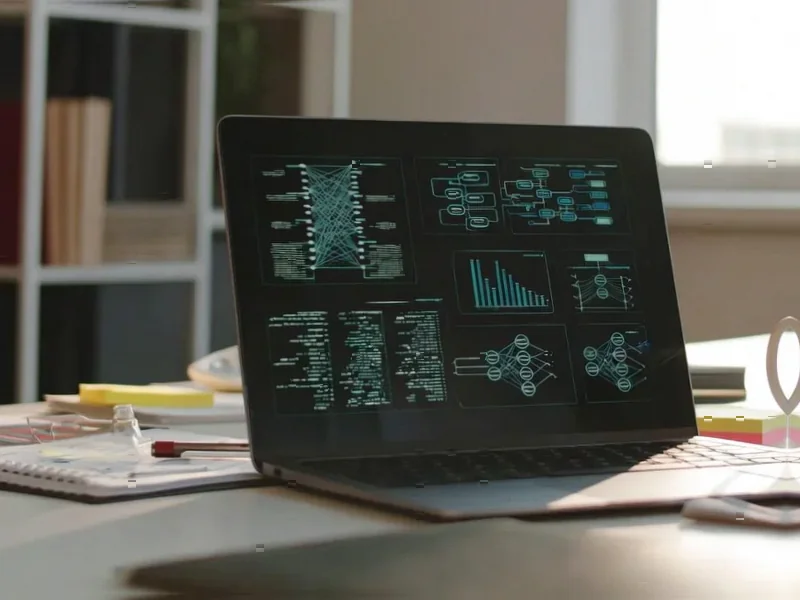According to Fortune, Chen Zhao, chief global strategist at Alpine Macro, has identified a “jobless profit boom” where corporate earnings are surging while employment remains depressed. In a Monday note titled “A Jobless Profit Boom,” Zhao pointed to the tech sector specifically, where employment has been in a “recession” for three years despite soaring profits, with recent layoffs at Amazon, Meta, and Salesforce occurring amid exceptional profit growth. Overall private-sector payrolls remain 5% below where pre-pandemic trends would have placed them, representing what Zhao calls a “permanent loss of jobs” even as corporate profits hit record highs. Productivity is currently growing more than twice as fast as it did in the previous decade, which Zhao attributes to AI displacing labor at an accelerating pace. This analysis comes as Nobel laureate Geoffrey Hinton warns that AI will “create massive unemployment and a huge rise in profits” due to capitalist incentives.
The Productivity Paradox in Historical Context
What we’re witnessing represents a fundamental break from historical patterns of technological disruption. Throughout the 20th century, automation typically created as many jobs as it destroyed, often in new industries that didn’t previously exist. The current AI-driven displacement differs because the technology is general-purpose rather than task-specific. Unlike assembly line robots that replaced manual labor but created maintenance and programming jobs, today’s AI systems can perform cognitive work across multiple domains with minimal human oversight. This creates what economists call a “scale without mass” phenomenon – companies can grow revenue exponentially without proportional increases in headcount. The productivity surge Zhao notes isn’t necessarily translating into broad-based wage growth, suggesting the benefits are accruing disproportionately to capital rather than labor.
Structural Shifts That Make This Time Different
Several converging factors make this technological displacement particularly concerning. The aging demographics Zhao mentions create a natural ceiling on labor supply, but this doesn’t automatically translate into bargaining power for remaining workers. When combined with restrictive immigration policies and AI’s ability to perform knowledge work, we’re seeing compression in both high-wage and low-wage employment simultaneously. Previous technological revolutions primarily affected manufacturing and routine tasks, but current AI systems are demonstrating competence in creative work, analytical functions, and customer service – the very sectors that absorbed displaced workers in earlier transitions. The decoupling of productivity and wages that began in the 1980s has accelerated dramatically, suggesting we may be entering an era where economic growth no longer requires proportional employment growth.
The Capitalist Incentive Problem Hinton Identified
Geoffrey Hinton’s warning about capitalist incentives driving job replacement deserves serious consideration. When the return on replacing human labor with AI exceeds the return on creating new products or services, corporate investment naturally flows toward labor displacement. This creates a prisoner’s dilemma where individual companies benefit from cost-cutting through automation, but the aggregate effect could undermine consumer demand if widespread job losses occur. The research on automation and inequality suggests we may be approaching a tipping point where the traditional relationship between corporate profitability and employment breaks down entirely. Unlike previous technologies that complemented human workers, current AI systems are increasingly designed as substitutes, creating what could become a permanent excess supply of labor.
Policy Implications and Economic Risks
The most immediate risk is that we’re building an economy that can function with progressively less human labor without developing corresponding mechanisms for distributing the gains. If corporate profits continue growing while employment stagnates, we could see worsening wealth concentration and potential demand-side economic contraction. The historical precedent isn’t encouraging – similar productivity surges during the Industrial Revolution led to decades of social upheaval before new economic arrangements emerged. Current policy frameworks assume that technological progress naturally creates new employment opportunities, but this assumption may no longer hold true with general-purpose AI. Without deliberate intervention, we risk creating what economists call a “post-scarcity” production system coupled with a scarcity-based distribution system – a recipe for systemic instability.
The Future of Work Reimagined
Rather than simply accepting massive job displacement as inevitable, we need to reconsider the fundamental relationship between work, income, and human dignity. The emerging pattern suggests we may need policies that decouple basic economic security from traditional employment, whether through universal basic income, shorter work weeks, or new forms of ownership in automated systems. Companies benefiting from AI-driven productivity gains might eventually face pressure to contribute to social stability through mechanisms like robot taxes or mandatory profit-sharing. The alternative – a world where a shrinking employed class supports a growing population of permanently displaced workers – seems economically unsustainable and socially volatile. The jobless profit boom may represent not just a temporary market anomaly, but the early stages of a fundamental restructuring of how we organize economic activity.




